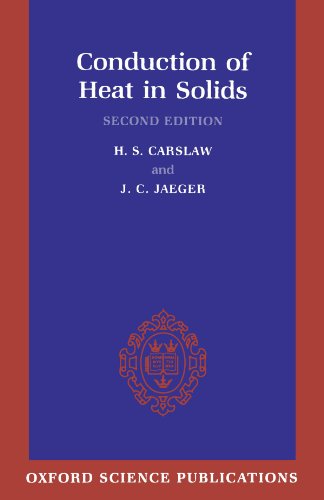Conduction of Heat in Solids pdf free
Par perry kala le jeudi, septembre 1 2016, 10:50 - Lien permanent
Conduction of Heat in Solids by H. S. Carslaw, J. C. Jaeger


Conduction of Heat in Solids H. S. Carslaw, J. C. Jaeger ebook
Publisher: Oxford University Press, USA
ISBN: 0198533683, 9780198533689
Page: 517
Format: djvu
Adding insulation to your Heat moves through solids, liquids, gases and even through a vacuum. (c) Metals are good conductors of heat whereas wood is a poor conductor of heat (i.e. Heat can flow by conduction, radiation or convection. Conduction can simply be thought of as heat transfer by “touch”, and only can occur in matter (solids, liquids and gases). Warm materials always transfer their heat to cooler materials. Introduction to the Mathematical Theory of the Conduction of Heat in Solids book download Download Introduction to the Mathematical Theory of the Conduction of Heat in Solids . Heat always flows from an area of high energy to an area of low energy. However, there is one important difference between metals and non-metals: metals contain Now, here comes the question: if molecular vibration is common to both metals and non-metals, shouldn't we expect both of them to exhibit similar heat conductivity? Home made 6x7 tilt shift camera, tominon 127mm f4.7,red filter, Ilford PanF 50, Ilfosol3. Convection is heat transfer by the movement of liquids or gasses. Improving your home's energy efficiency is one of the best investments you can make, paying tax-free dividends immediately in the form of lower heating costs. Well, in fact there are two mechanisms of heat conduction. An insulator).Discuss this statement with reference to the mechanism of thermal energy transfer in solids. All solids (metals and non-metals) are made up of tiny particles called atoms, or groups of atoms called molecules. In general “heat transfer” can be considered to explain both the Mpemba and the Leidenfrost effect, and there are three modes of heat transfer. This is why some substances are used as insulators while others are used in applications such as cooking. Conduction is heat transfer within solids or between contacting solids. An object with low conductivity will transfer heat slower than an object with high conductivity.